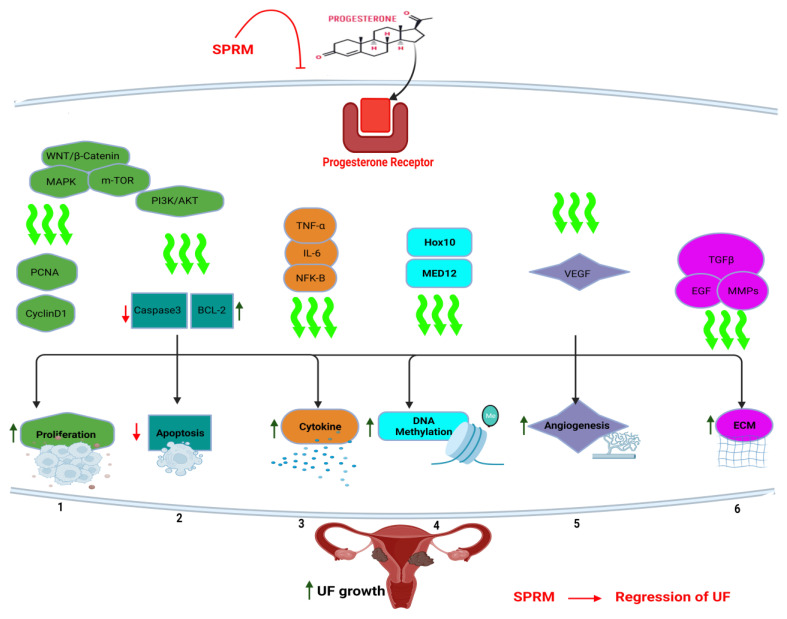Figure 1.
Progesterone signaling in uterine fibroid pathogenesis. Progesterone binds to its own receptor (PR), with subsequent activation of several signaling pathways including (wingless-related integration site) WNT/β-catenin pathway, mitogen-activated protein kinases (MAPK), and phosphoinositide 3-kinase (PI3K)/Ak strain transforming (AKT)/mammalian target of rapamycin (mTOR). This resulted in activation of cell proliferation, apoptosis inhibition, cytokine release, angiogenesis induction, and extracellular matrix (ECM) accumulation towards uterine fibroid (UF) tumor growth. Selective progesterone receptor modulators (SPRM) such as ulipristal acetate can interfere with progesterone signaling and induce tumor regression. PCNA: proliferating cell nuclear antigen. TNF-α: tumor necrosis factor alpha, IL-6: interleukin 6, NF-kB: nuclear factor kappa B, MED12: mediator complex subunit 12, Bcl- 2: B-cell lymphoma-2, TGF-β: transforming growth factor beta, MMP: matrix metalloproteinase, EGF: epidermal growth factor.

